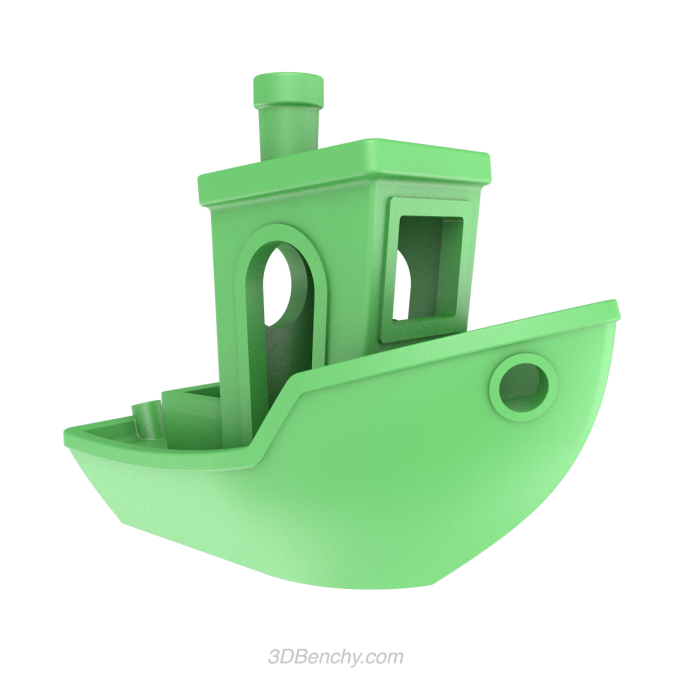![#3DBenchy, a common benchmark component for 3D printers [Image: 3DBenchy.com]](https://fabbaloo.com/wp-content/uploads/2020/05/benchy_img_5eb0a63da2623.png)
Charles Goulding of R&D Tax Savers discusses benchmarking in 3D printing.
Continually increasing 3D printing equipment capability and expanding 3D printing material applications are becoming critical attributes of manufacturing and design businesses. Benchmarking is a valuable business process that informs management how their skill set in a particular area compares to their business peers’. The article below presents a variety of ways that 3D printer users can compare their 3D printing prowess to other similar users. The new and improved 3D products and processes that are developed post benchmarking are often eligible for R&D tax credits.
The Research & Development Tax Credit
Enacted in 1981, the federal Research and Development (R&D) Tax Credit allows a credit of up to 13 percent of eligible spending for new and improved products and processes. Qualified research must meet the following four criteria:
-
New or improved products, processes, or software
-
Technological in nature
-
Elimination of uncertainty
-
Process of experimentation
Eligible costs include employee wages, cost of supplies, cost of testing, contract research expenses, and costs associated with developing a patent. On December 18, 2015, President Obama signed the bill making the R&D Tax Credit permanent. Beginning in 2016, the R&D credit can be used to offset Alternative Minimum Tax and startup businesses can utilize the credit against $250,000 per year in payroll taxes.
Large Company Benchmarking
The 3D printing capability of many large manufacturers is well publicized throughout their own public relations communications and articles written about their 3D printing activities. Examples of such companies include GE, General Motors, United Technology, Lockheed, Siemens, BASF, BMW and Stanley Black & Decker. Significant opportunities are available in small-volume, high-value, and short lead-time production. Some areas of innovation include fixtures for production and products customized for a specific client. Most notably, automotive manufacturers and contract manufacturers have seen significant cost reductions through the use of 3D printed fixtures to aid in assembly or robotics processes.
Small Manufacturers & Machine Shops
Many small manufacturers and particularly machine shops inform prospective customers about their capabilities by presenting their machine tooling and 3D printing assets on their websites. Buyers at purchasing departments will typically ask prospective vendors to provide equipment lists to evaluate the ability to handle particular technical projects. Several 3D printer manufacturers offer complementary or low-cost samples that allow a prospective client to assess the suitability of 3D printing as an alternative manufacturing process. In fact, Formlabs has recently released a ROI calculator available on their website to provide cost estimates to a wide variety of industries by taking into account labor savings and lead time delays.
![Formlabs ROI calculator for a locating fixture [Image: Formlabs]](https://fabbaloo.com/wp-content/uploads/2020/05/form_labs_roi_img_5eb0a63e1c9c5.png)
Patent Benchmarking
Companies that have developed proprietary 3D products, materials and processes often patent their inventions. 3D related patents are easily searched by examining patent databases that are derived from the U.S. PTO (Patent Trademark Office) on the USPTO.gov website or Google Patents. When a competitor has a concentration of patents in a 3D product area this usually signals a plan to provide related products designed and manufactured by 3D printing. Since 3D printing is a new method of manufacturing, new opportunities for patent filings are presented when companies develop new products using 3D printing.
3D Printing Industry Publications & Centers of Excellence
The 3D printing industry has largely developed in the post-Internet era and makes ample use of all aspects of social media and digital marketing. 3D printing equipment and product output is typically quite colorful which provides the opportunity for impactful graphics and interesting communications. Many dedicated news sites and blogs provide insights into the latest developments in 3D printing, allowing for understanding and comparison of R&D and manufacturing advances.
Numerous colleges and universities, particularly those with engineering and design courses, have 3D printing programs including complete 3D print centers and laboratories. These programs are usually very interested in working with the business and design community. This is a good way to work with an established 3D printing infrastructure and even access professors and students interested in executing market applications. In addition to college and university programs, there are Federal and State sponsored 3D printing Centers of Excellence that have been established to support 3D printing projects. The physical sites for these 3D Centers of Excellence have been purposely selected based on regional business concentrations to provide pathways for incumbent industries to accelerate their adoption of 3D Printing. Moreover, the leading 3D printer and material suppliers often beta test their latest innovation at these Centers of Excellence.
Conclusion
There are a variety of practical alternative ways 3D printer business users can measure their relative benefit of 3D printer adoption. A comprehensive benchmarking analysis based a variety of outreach should inform management, and provide the data and aid future 3D product business planning and remain competitive. While companies might not see immediate benefit or process compatibility, some expenditures can be recovered through Federal and State R&D incentives.










